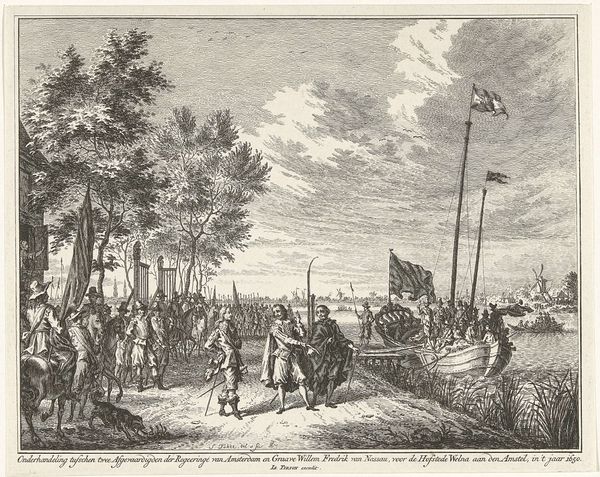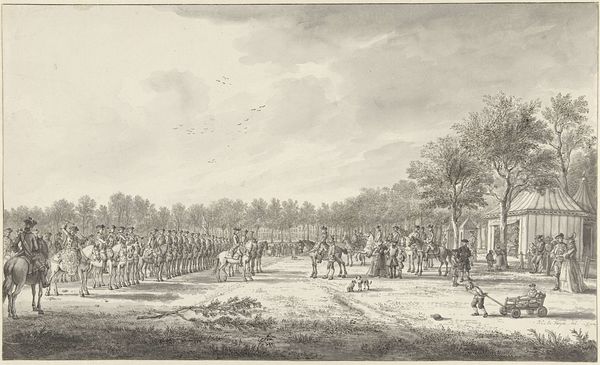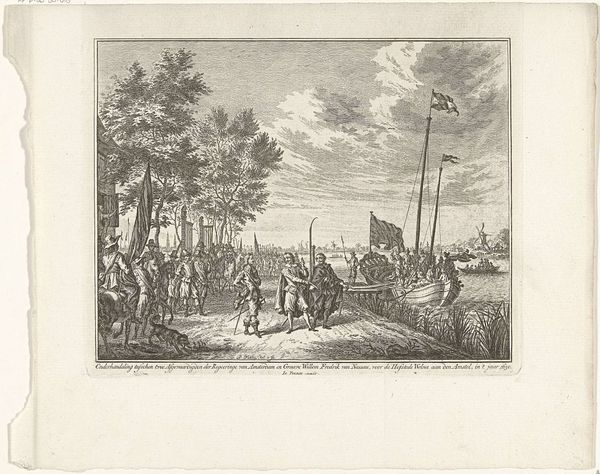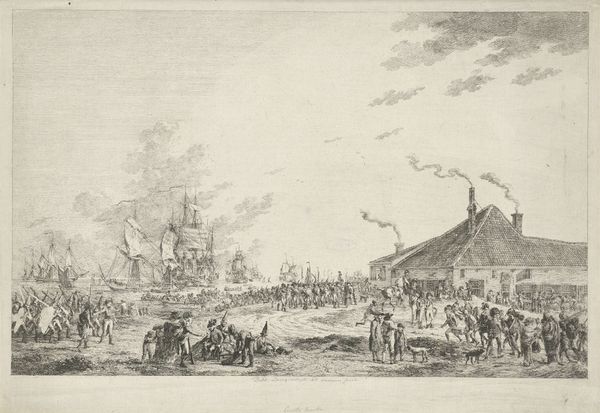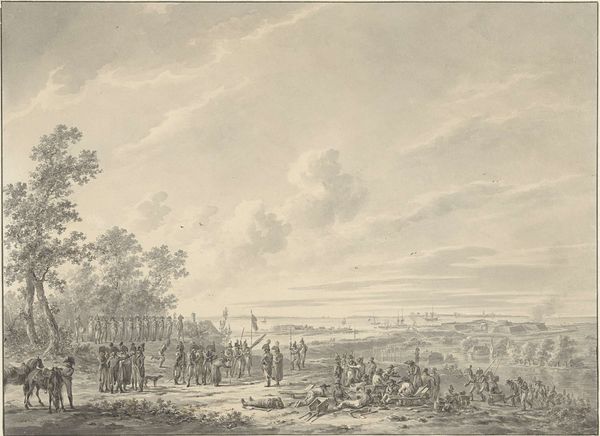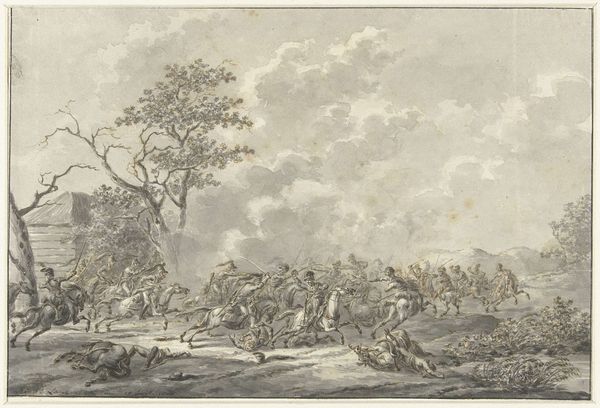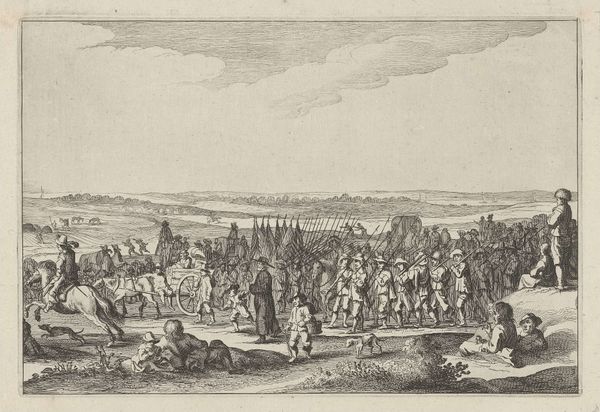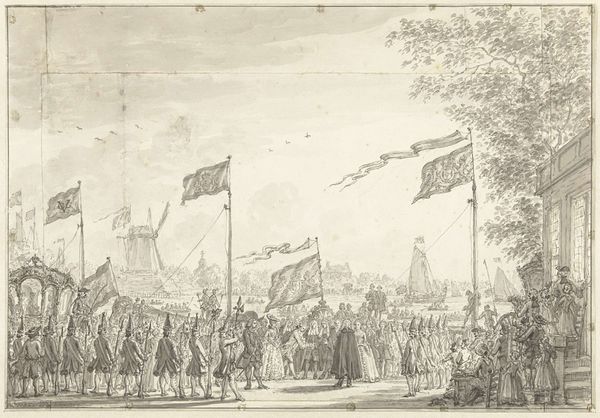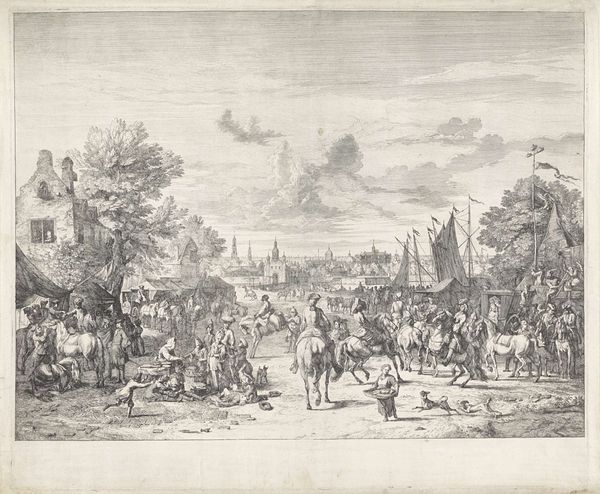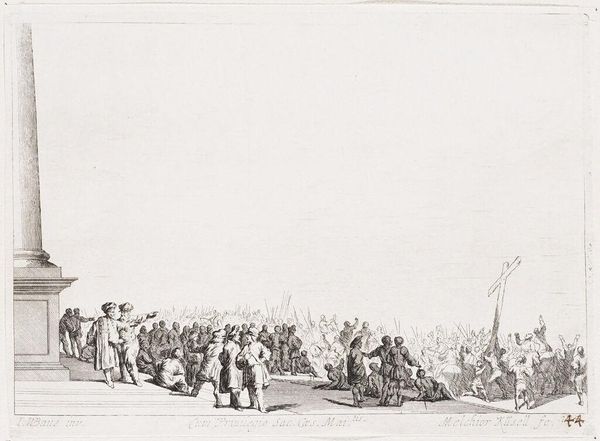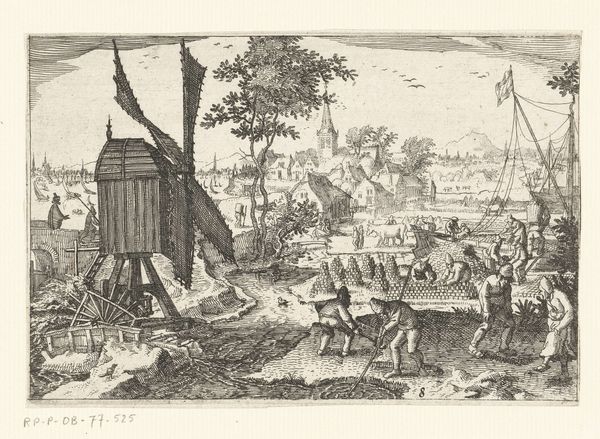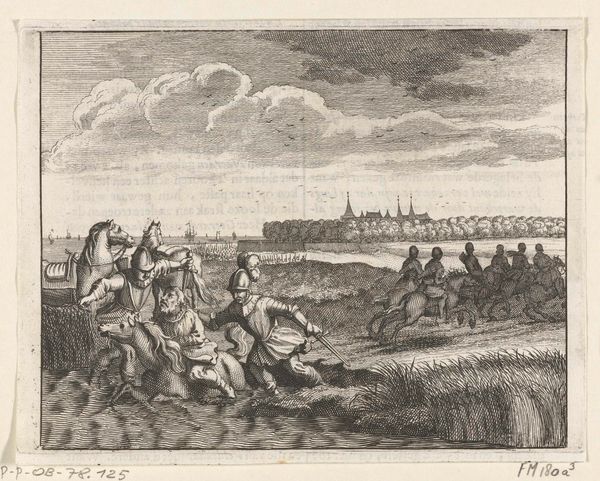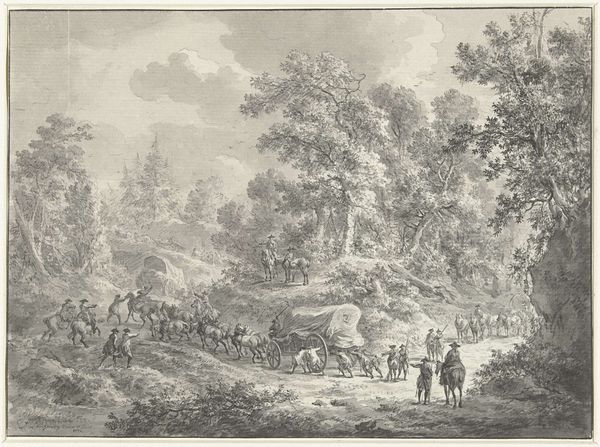
Onderhandeling tussen afgevaardigden van Amsterdam en graaf Willem Frederik bij Hofstede Welna aan de Amstel, 1650 1754
0:00
0:00
drawing, ink, pen
#
drawing
#
baroque
#
pen illustration
#
pen sketch
#
landscape
#
ink
#
pen-ink sketch
#
pen work
#
pen
#
genre-painting
#
history-painting
Dimensions: height 152 mm, width 195 mm
Copyright: Rijks Museum: Open Domain
Curator: Good morning. We’re standing before Simon Fokke’s pen and ink drawing from 1754, “Onderhandeling tussen afgevaardigden van Amsterdam en graaf Willem Frederik bij Hofstede Welna aan de Amstel, 1650," housed here at the Rijksmuseum. Editor: My first impression is one of quiet tension. The meticulous line work creates an atmosphere that feels both detailed and strangely distant, historical yet immediate in its presentation of figures converging on this waterside location. Curator: Absolutely. The drawing is a marvel of baroque landscape, look closely at how Fokke uses line weight and density to create depth and suggest atmospheric perspective, with a meticulous focus on form, creating a compelling structure that guides the eye. Notice the balanced composition – the landscape elements mirror the human figures. The line becomes a vehicle for not just depicting but understanding social structure. Editor: And let’s consider the materials: pen and ink, readily available even then. This wasn't some precious commission using expensive pigments. It speaks of accessibility, of history being something recorded and perhaps even shaped by those with simpler means, rather than exclusively by the elite. The repetitive nature of the mark-making—the stippling to indicate shading, for instance—suggests a painstaking labor, perhaps reflective of the slow, deliberate pace of negotiations at the time. Curator: I find it remarkable how Fokke imbued the scene with such clarity and order using essentially just line. Consider the symbolism embedded within its arrangement; the negotiation becomes an allegory, a careful composition of power dynamics and relationships depicted formally. Editor: I see labor and access enabling historical articulation. The choice of a more modest medium could imply a conscious democratizing impulse. How else can one interpret its relationship with production unless this scene echoes countless, nameless encounters shaping the cultural landscape we know of? Curator: It gives us much to contemplate regarding pictorial representation and historical context through a unique aesthetic lens. Editor: A view into history articulated by the tangible process inherent in each pen stroke; thought made physical. Thank you for that rich exploration.
Comments
No comments
Be the first to comment and join the conversation on the ultimate creative platform.
